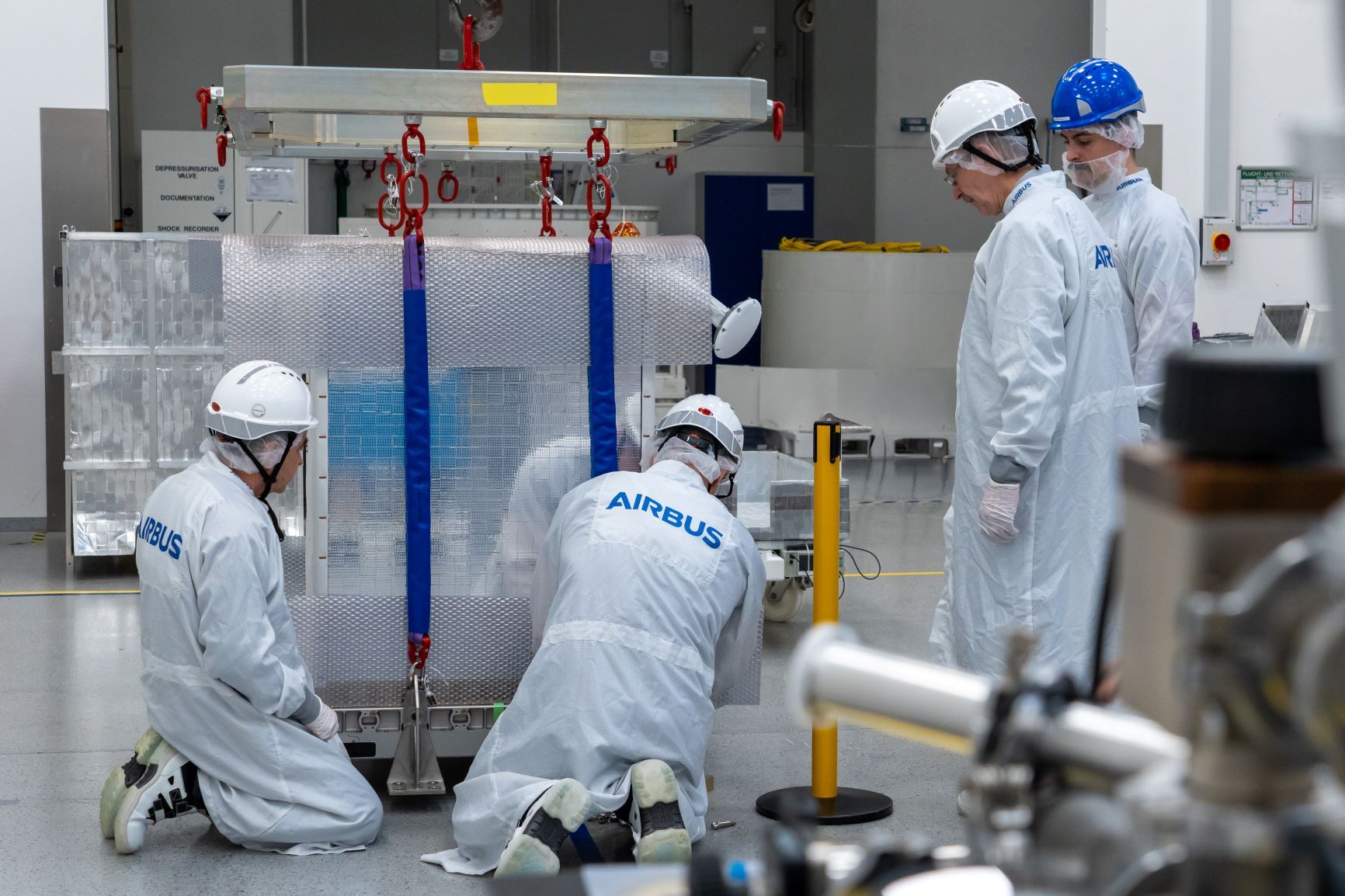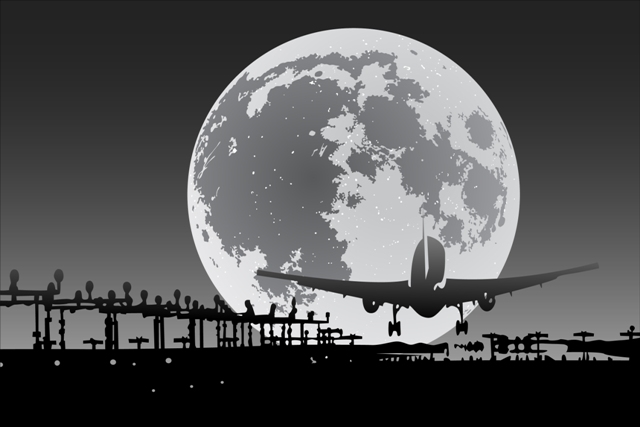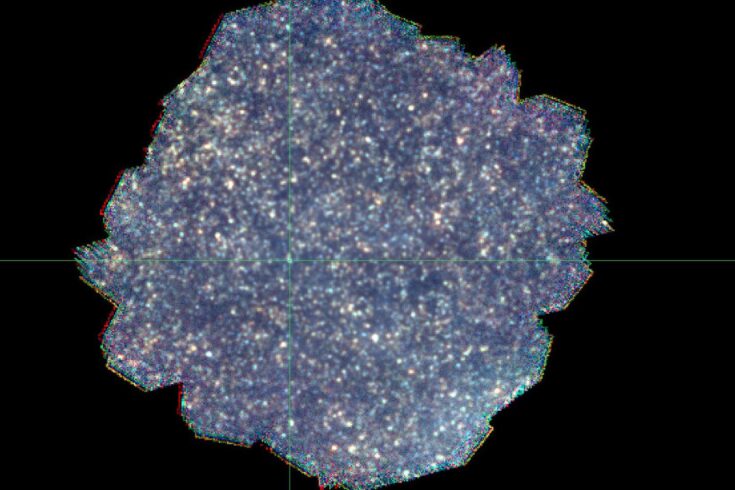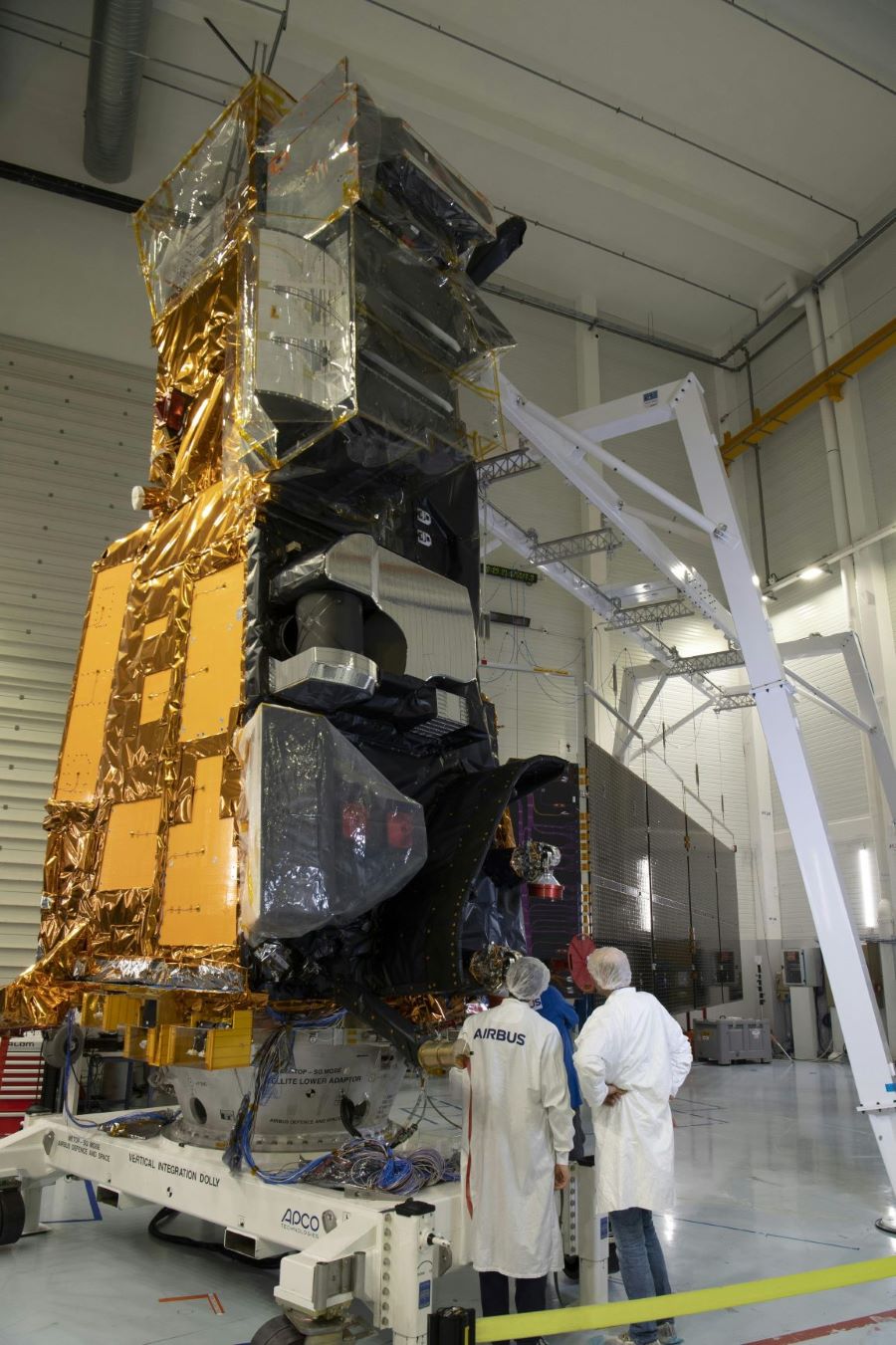UKSA funding ensures UK role in global missions to Moon, Mars and Venus

Above: UK-built camera used in ExoMars Raman Laser Spectrometer.
Courtesy INTA/UVA
The Space Science and Exploration Bilateral Programme will help Royal Holloway develop software for the Indian Space Agency (ISRO) Chandrayaan-2 orbiter to detect ice under the surface of the lunar south pole.
Another project will see the University of Leicester lead on a Raman spectroscopy instrument for iSpace’s commercial rover and lander missions investigating water ice on the Moon, helping us to understand whether this is a resource that could be used for longer term lunar exploration.
Other projects to receive a share of the £7.4 million funding include the Open University and universities of Sussex, Aberdeen and Cambridge teaming up with NASA, the Canadian Space Agency (CSA) and the Japan Aerospace Exploration Agency (JAXA).
The announcement coincides with the Global Space and Technology Convention (GSTC), taking place in Singapore this week to showcase the rapidly growing sector in Asia and opportunities for international collaboration. These projects, alongside a UK delegation at the GSTC, highlight how the UK supports its world-class scientists to work with partners around the world as set out in the National Space Strategy.
Andrew Griffith MP, Minister for Space at the Department for Science, Innovation and Technology, said: "From exploring water on Mars and the possibility of sustained human activity on the red planet, to how galaxies evolved over time, our more than £7 million investment is pushing the boundaries of space discovery and putting the UK at the heart of some of the most important global space missions.
"With top UK universities from Sussex to Aberdeen leading these groundbreaking endeavours, our country is at the heart of exploring beyond our planet, working with partners in Japan, India, North America and around the world, and growing our economies."
Dr Paul Bate, Chief Executive of the UK Space Agency, said: "These projects present an opportunity for UK science to make crucial contributions to ground-breaking global missions that will deepen our understanding of the Moon and our neighbouring planets.
"This funding, which builds on previous early-stage awards, will help catalyse international investment into the UK space sector and highlights the value we place on sharing knowledge and expertise with our counterparts overseas to break the boundaries of space exploration.
"The Global Space and Technology Convention in Singapore is the ideal setting to share this news and showcase the benefits of expanding our work with global partners."
Marie-Claire Perkinson, Chair of the Space, Science and Exploration Committee at UKspace said: "The UKSpace Space Science and Exploration Committee welcome this opportunity for academic contributions to the bi-lateral programme in support of global agencies. Developing strong relationships through these projects is a key step toward future industrial collaboration."
The projects, which have already received a total of £400,000 following an initial funding round, all demonstrate both UK scientific excellence in critical areas of space science and exploration technology – such as detector and hardware development, pipeline processing, optics and spectroscopy – and opportunities to work closely with international counterparts including support for mission candidates making progress in similar areas.
The work by Royal Holloway will support ISRO’s ongoing Chandrayaan programme, which began in 2003 and has been making ground-breaking steps in developing our understanding of how we may be able to use lunar resources for deeper exploration of the Moon. In August last year, its Chandrayaan-3 mission became the first in the world to successfully land on the lunar south pole.
The iSpace commercial mission will see experts at the University of Leicester lead the development of the Raman spectroscopy instrument – which helps analyse and identify molecules – that will support the Japanese programme to establish resource utilisation infrastructure on the Moon that could benefit future lunar exploration missions.
The projects
- Chandrayaan-2 and Shukrayaan (Royal Holloway and ISRO, India) - £306,000 Processing of multi-band radar and developing analysis software for missions to detect lunar south pole sub-surface ice and map surface of Venus.
- Star-X (University of Leicester and NASA, USA) - £650,000 High-level science data products, accessible via a web portal, and a UK data archive, for the study of Universe formation using the time-domain method and “multi-messenger” astrophysics.
- FIR missions (University of Sussex and NASA, USA) - £1.1 million
Provision of superconducting detectors, detector systems, optics, filters and data pipelines for a potential probe mission to investigate formation of planetary systems and the evolution of galaxies. - HABIT (University of Aberdeen and JAXA, Japan) - £320,000 Provision of instrument monitoring air and ground temperature, wind, humidity and hydration state of salts, for a Mars rover/lander studying water cycle, chemistry and habitability
- I-MIM (The Open University and CSA, Canada) - £2 million High performance detectors for the Mars multispectral and stereo imager for the International Mars Ice Mapper mission to map accessible water ice deposits on the Martian surface.
- Lunar Spectroscopy (University of Leicester and iSpace, Japan) - £1.5 million
Lead development of the raman analytical spectroscopy instrument, based on the raman laser spectrometer, for commercial small lunar landers and rovers that will explore the lunar surface for space resource utilisation. - CosmoCube (University of Cambridge and NASA, USA) - £1.5 million
Lead for project, payload and science, mission and space platform for a cube-sat that will deploy a precision radiometer to measure spectral distortions in the Universe’s cosmic microwave background.













